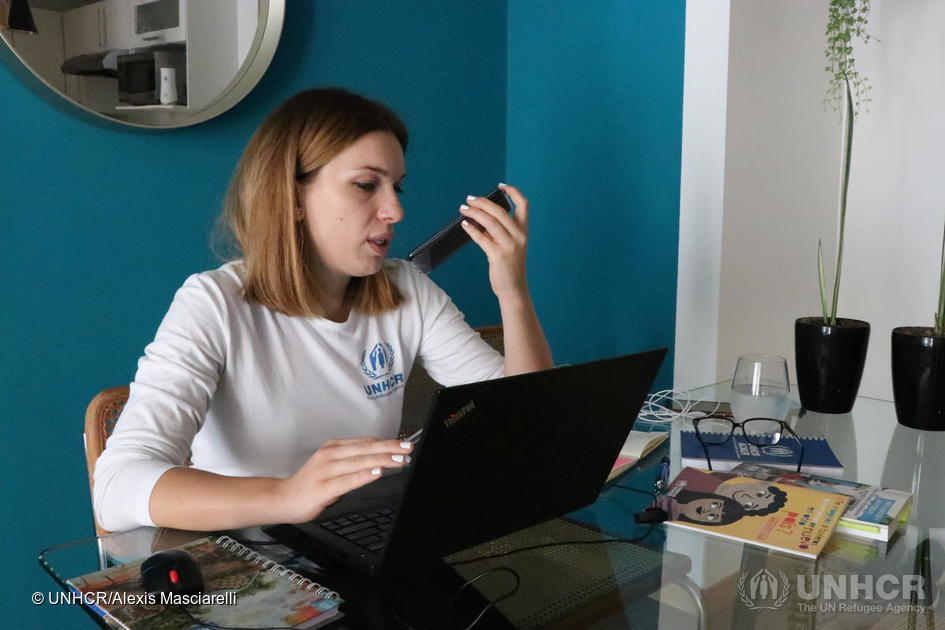Child Protection: What Assessments Are Needed?

Share this step
Once a child has been referred to an authorised child protection agency, a child protection caseworker will be assigned and take responsibility for organising an assessment of the child’s circumstances, needs and wishes. This helps verify the child’s situation and provide all the necessary information for well informed, accurate decision making regarding the protection and other support the child might need. When an assessment is made for children who are refugees, UNHCR refer to this as a Best Interests Assessments (BIA) and is carried out by a trained caseworker. You can read more about this at the bottom of the course step.
We understand that gathering information during the COVID-19 pandemic may pose particular challenges – most especially when there are requirements for social distancing and restrictions on movement. However, the reasons to carry out an assessment and the type of information to be gathered remain important. That is why multi-sectoral working and receiving professional opinions with colleagues from different services who are in contact with, or are able to provide information about the child, is even more important. As we have noted on previous course steps, this might even require an enhanced role for different service providers but should only be undertaken in partnership with a child protection caseworker on a case by case basis – and with guidance and training on how this can be done carefully and safely.
Information should be collected that is necessary to systematically evaluate:
- The vulnerabilities and risks a child may be facing
- The child’s individual needs and wishes
- Understanding what is needed to meet the child’s best interests.
This is relevant for all children thought to be at risk including those living with their family or other caregivers. It is also necessary for children without caregivers – as for example unaccompanied and separated refugee, migrant and internally displaced children. It might be needed for a child hastily returned home from a residential care setting, or a child now living on the streets.
What assessments are needed?
1. An initial assessment
An assessment should be carried out as soon as possible after a child has been identified as possibly being at risk. In the first instance it may only be possible to carry out an initial assessment. Some agencies call this a rapid assessment – a quick process concentrating on addressing immediate support.
For example, the initial assessment might only address urgent concerns such as, immediate protection risks, medical attention, food, clothes etc. In circumstances where the child might be in danger – for example, from abusers, traffickers or other criminals – it is important to check these risks and that any necessary immediate protection measures are taken. The assessment should also consider if alternative care is urgently needed – whether with extended family or in a formal care setting. Note that in refugee settings an initial assessment may be referred to as a Short or Initial Best Interests Assessment.
The Inter-Agency Standing Committee (IASC) is a mechanism for inter-agency coordination of humanitarian assistance. Guidance taken from the Inter Agency Guidelines for Case Management and Child Protection – available in 6 languages – recommends this assessment should be done within 24 hours and certainly not longer than 48 hours after a child has been identified. Please think about how this might be possible taking into consideration the restrictions possibly being imposed because of the COVID-19 pandemic.
2. A comprehensive assessment
If it is not possible to fully assess the child’s circumstances in the first instance, then within the shortest possible time a second, more comprehensive, assessment should be conducted. Information taken from the same IASC Guidelines recommends this assessment should be carried out within one week of a child being identified as being at risk. The IASC also recommend the results of the assessment should be used to develop a plan for a child’s protection – and alternative care plan if necessary – no more than two weeks after the assessment is completed.
This diagram has been adapted from the IASC Guidelines and illustrates an holistic approach to assessments.

The way an assessment is conducted must take into consideration the safety of the child – and consideration of the ‘do no harm‘ principle. During the COVID-19 pandemic there may be decisions whether a remote assessment could be safely undertaken – as for example, through phone calls – or if it is imperative to visit a child thought to be at very serious risks of harm.
Please consider any other adjustments to current assessment tools that may need adapting during the COVID-19 pandemic. This should ideally be undertaken by a government department in partnership with a national inter-agency child protection coordination mechanism. In a refugee setting it should be undertaken in consultation with UNHCR where a Best Interest Procedure process is used. And as we have already noted in previous course steps, anyone who participates in steps of case management should be:
- Trained in the clear roles and responsibilities they are assigned – including in child-sensitive approaches to assessments
- Using shared standardised assessment forms and information gathering protocols
In refugee operations, UNHCR have established a Best Interest Procedure (BIP) for situations where national procedures are not available or accessible to refugee children. This procedure includes standards for assessment, case planning and case management for refugee children.
The Best Interests Procedure includes the key steps of child protection case management as well as UNHCR’s Best Interests Determination (BID) process, which can be initiated at any stage of the Best Interests Procedure. The BID process is triggered in 3 distinct situations. This includes:
- Identifying durable solutions and complementary pathways for unaccompanied children (and separated children where there is an additional significant risk factor or protection concern)
- Determining the most appropriate options for children at risk in exceptional circumstances including:
- family reunification for unaccompanied and separated children in exceptional situations
- temporary care for unaccompanied and separated children in exceptional situations
- other children at risk in exceptional situations on a case-by-case or context-specific basis
- Possible separation of a child from their parents against their will
More details can be found on page 71-95 of the BIP Guidelines. BID decisions must be approved by a specialised panel, which should be composed whenever possible by government officials, partner agencies with different backgrounds and expertise in child protection and other related areas, and UNHCR staff.
All professionals who participate in assessments should be trained in child-sensitive approaches. They should also be able to recognise if a child needs psychosocial support before being able to continue with any assessment. It is important that any psychosocial support for children should be carried out by those who have received training to do so.
Discussion
Are you currently involved in assessing the needs of a child for whom there are protection concerns? What are the challenges you are facing as a result of the COVID-19 pandemic? How are you overcoming these challenges?
Share this
COVID-19: Adapting Child Protection Case Management

COVID-19: Adapting Child Protection Case Management


Reach your personal and professional goals
Unlock access to hundreds of expert online courses and degrees from top universities and educators to gain accredited qualifications and professional CV-building certificates.
Join over 18 million learners to launch, switch or build upon your career, all at your own pace, across a wide range of topic areas.
Register to receive updates
-
Create an account to receive our newsletter, course recommendations and promotions.
Register for free







